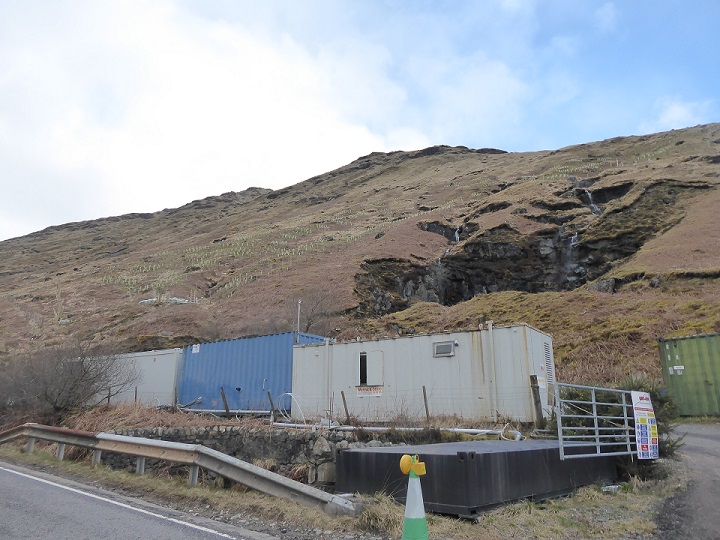
Last week I travelled up the A83 and over the Rest and Be Thankful for the first time in over a year. What first caught my eye was the number of new tree shelters on the hillside. In 2020 Forest and Land Scotland committed to reduce its use of plastic tree shelters to a minimum and in December 2021 announced (see here) it was introducing new biodegradable tree shelters called Tubex Nature:

I did not get close enough to tell whether the trees shelters were tubex nature or not. In places there did appear some more transparent shelters resembling those on Cheviot Trees website (above) but most appeared standard plastic:
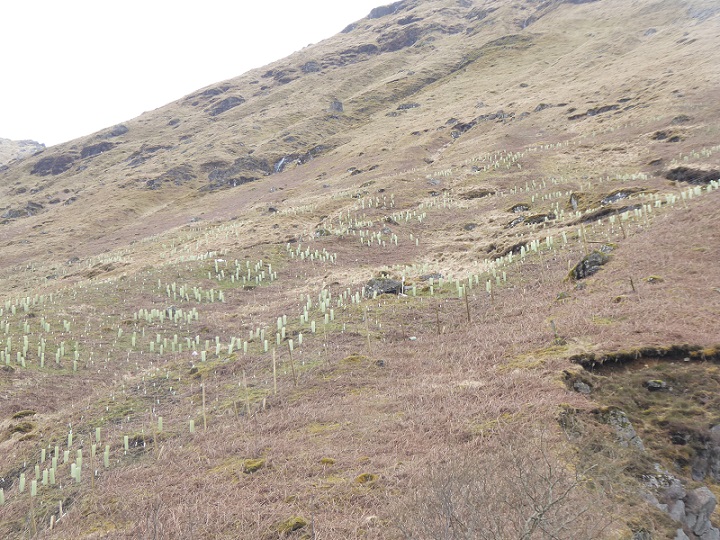
One of the objectives of Forest and Land Scotland’s “Glen Croe, Rest and Be Thankful Land Management Plan (LMP) 2019-29” (see here) was to:
- “Ensure rapid establishment of woodland and vegetation growth, by providing suitable protection from deer and other mammal grazing, to maximise potential stability benefits”
Normally, deer fencing is a waste of public money, but because of the history of landslips above the A83 and the urgent need to stabilise the slope, using fencing to exclude ALL large grazing herbivores appears in the case to have been justifiable. The LMP also stated that:
“vole damage could be an issue, particularly over a prolonged establishment period. Vole impacts should be monitored and beating up, spot spraying of herbicide & vole guards are potential remedies.”
With planting work having just started last year there has been no time no for monitoring to ascertain if the use of vole guards might be justified. There was no mention in the LMP of any need to provide protection from hares or rabbits so how what FLS has actually done on this slope fits with the plan is unclear.
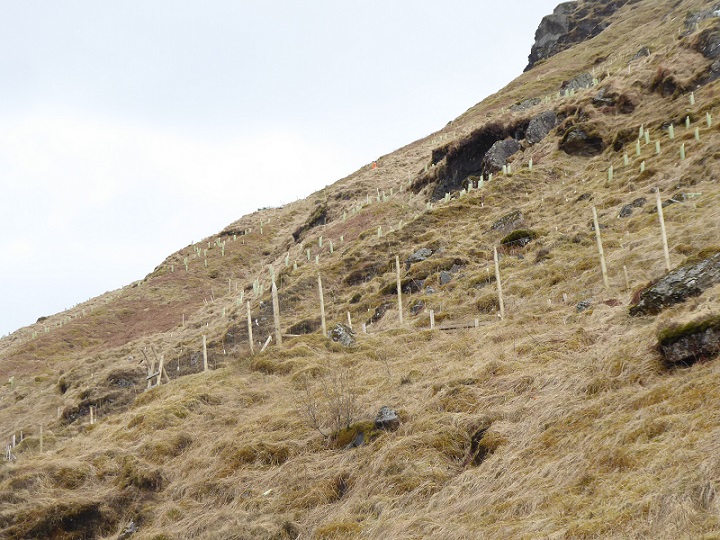
That tree shelters were NOT part of the approved LMP on FLS’s website is also suggested by this statement:
“Deer fencing is essential for the success of the project, but it is also arguably the only proposed operation with potentially negative consequences for landscape and recreation”.
That suggests the original intention was only to use vole guards, which are very small and get lost in the landscape. I can find nothing either about the use of tree shelters in the minutes of the A83 Taskforce which has been overseeing this project.
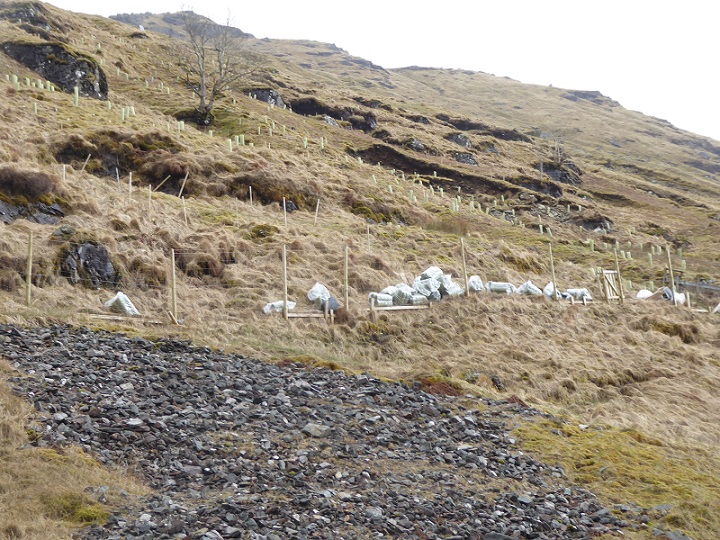
One possible explanation for the shelters is that the tree planting is so behind schedule that FLS decided to use them to try and force tree growth and make up for lost time. The original timetable for this planting, as set out in Map 8 accompanying the LMP and dated December 2018, was for it to be completed in 2020/21 i.e. two years ago. In August 2020 the taskforce was told “Erection of deer fence around hill side planned for later this year. Planting of hillside due Autumn 2021″. The timetable continues to slip, with the latest delays reported to the A93 taskforce being attributed to bad weither: hence the bags of tree shelters by the fence.
If this is right, the use of tree shelters will not only increase the costs – Scottish Forestry now has a policy that all tubes should be removed – but the risks. Tree shelters blow over in the wind. One enormous climate change induced storm and much of this new woodland could be destroyed.
Had our public authorities responded more urgently to the situation at the Rest and Be Thankful – planting was first recommended over ten years ago (see here for more on the history of conservation failure) – woodland would now be established without any need for tree shelters. As proof of this the Transport Minister and the A83 Taskforce only need to look at Forest and Land Scotland’s Butterbridge Plantation, just round the corner on the north-west flank of Beinn Luibhean:

From the LMP it appears FLS’ planners knew quite well that as long as marauding sheep and deer were excluded from the area, trees could be planted without tree tubes. However, besides the pressure caused by the delays, maybe FLS has also been lobbied behind the scenes by Transport Scotland which loves nothing more than to cover the banks of all new roads with plastic tree shelters?.
Whatever the explanation, FLS still do not own all the land on the north east side of the A83 at the Rest and Be Thankful:

This is strange because the LMP stated:
“Slope stability is also an issue outside the steep slopes above the A83 and this has impacts on water quality, fencing and recreational paths. It is proposed to expand the area of core protection forest above the A83 to the north to link with the Butterbridge Woodland, and to the south along the Croe Water”
Returning over the Rest and Be Thankful I was amazed to this area, whose ownership is not yet recorded online at the Registers of Scotland, is still being used to graze sheep and cattle.
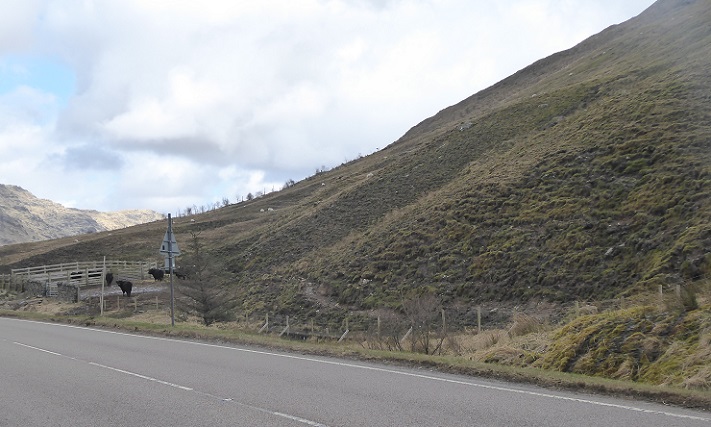
At first I thought this might be part of a clever scheme to break up the soil and promote natural regeneration but, on the contrary, on checking the LMP I found this:
“The 2012 Forest Research report (Appendix 7) highlights research showing the negative impacts on slope stability arising from grazing of both stock & deer (P9). On the Rest & Be Thankful project area cattle grazing in particular currently causes extensive ground damage, erosion and the creation of deep water filled poach marks.”
AND
“The removal of stock is anticipated to create a better soil structure and a more robust flora, and the new woodland will consist of a diverse mix of Native Broadleaves with varying rooting characteristics.”
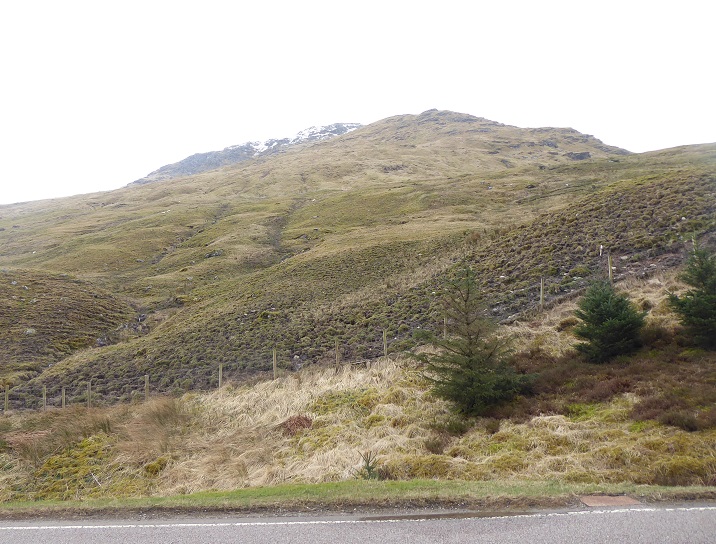
The slope may be less steep than that above the A83 around the corner but the angle appears greater than that between the A83 and the Old Military Rd where massive protective bunds have been built:
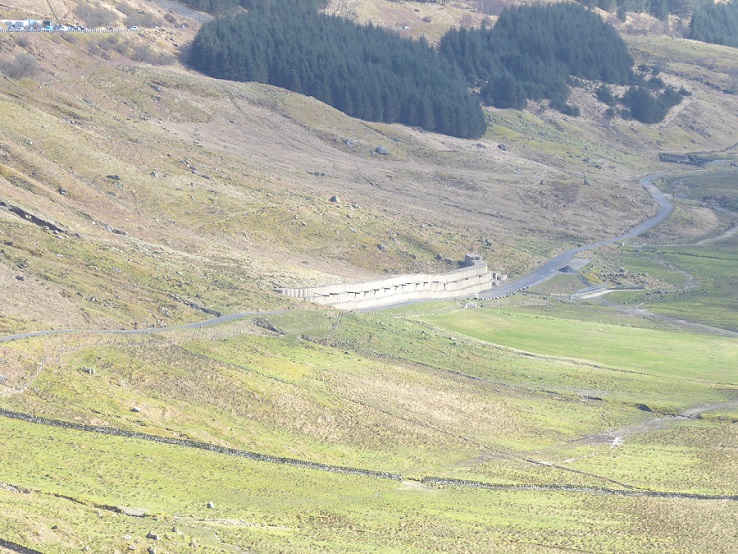
The September minutes of the A83 taskforce show that when Cllr Iain Shonny Paterson (IP), who is on the Loch Lomond and Trossachs National Park Board, “asked if the hillside above the Rest and Be Thankful had stabilised over the years or is it still active and potentially dangerous?” he was told:
” monitoring is ongoing and that the significant movements observed in 2020 have reduced but have not stopped completely. When saturation levels increase following heavy rainfall events, movements do increase but the area is more stable than it was in 2020.”(see here).
The minutes of the January meeting of the A83 taskforce contains a slide which shows that whatever the impact of planting and the engineering works on the south slopes of Beinn Luibhean, landslips are being recorded on other slopes in the area (and close to the road):
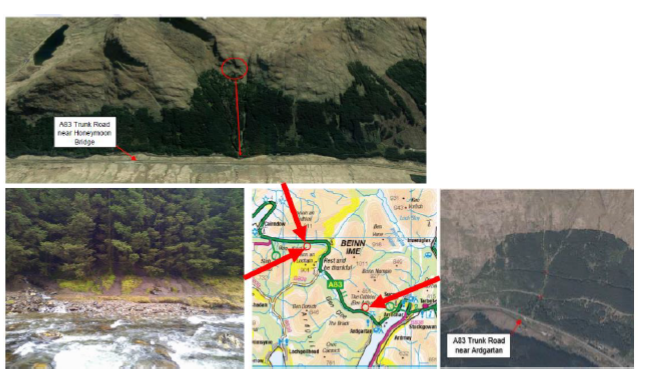
It is interesting that these two landslips were recorded in conifer plantations. It appears that shallow rooted conifers do very little to stabilise slopes. While native broadleaved trees, whether naturally seeded or planted, may do better it is extremely unlikely they will solve all the problems along the A83 in the medium term either. However, whatever the limitations of trees as a means of stabilising slopes, to continue to allow the landowner to graze sheep and cattle on these slopes appears to me the height of folly. Questions that need to be asked are:
- Why didn’t Scottish Ministers also acquire this area of land at the top of the Rest and Be Thankful when they bought the rest of Beinn Luibhean?
- Is the Scottish Government still paying the landowner/farmer concerned any rural payments subsidy?
- Where is the conservation voice on the A83 Taskforce (according to the meeting minutes the LLTNPA is usually either absent from meetings or silent)?

2 Comments on “The conservation failure on the A83 at the Rest and Be Thankful”